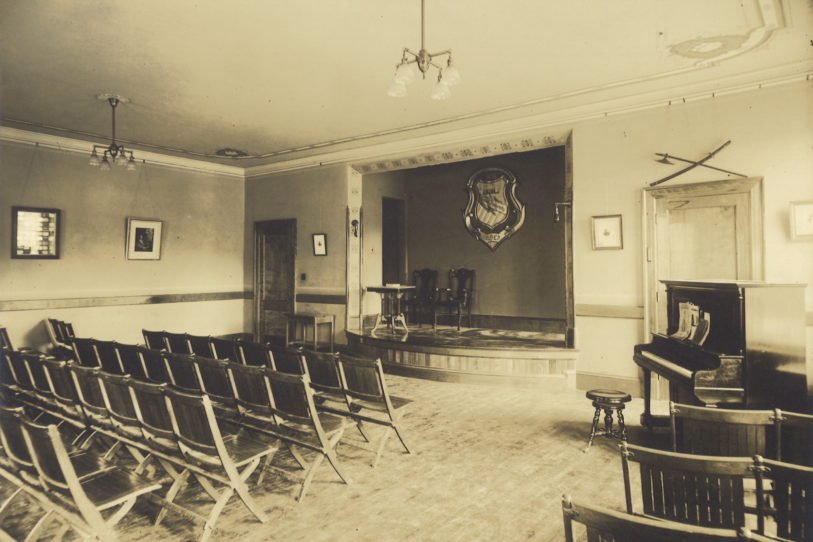A culture of active literary societies provided opportunities for abundant cultural and social opportunities on campus: the Literary Adelphi (1827); the competing Social Fraternity (1830); the Ladies Literary and Missionary Association (1833) – reconstituted as the Germanae Delictae Scientiae (1853). Very active throughout the 19th and early 20th century,1 the societies disappeared by the late 1940s, replaced by more and more co-curriculars added to the New Hampton School program.2
In the archives of New Hampton School, there are hundreds of elaborately designed and printed programs for the School’s three “competing” literary societies. Small paper gems produced over several decades advertise plays, recitations, dances, debates, and programs open to all. The all-male Literary Adelphi was the first, started in 1827, the sixth year of New Hampton. Within a few years, the founding of an alternative society highlighted an intention to be more inclusive: the Social Fraternity (circa 1830 – the actual date has been debated). Three years later, the School’s Female Department initiated the highly successful Ladies Literary and Missionary Association (1833). As famed New York City newspaper editor, Horace Greeley reported in the May 19, 1838 edition of his paper, The New Yorker:
“We have received the ‘Fourth Annual Report of the Ladies’ Literary and Missionary Society of the New Hampton Female Seminary,’ a large pamphlet of nearly a hundred pages, embodying the proceedings for the last year of a Female Association for the purposes of philanthropy and mental improvement, with the character and merits of which our readers have already been acquainted. This Association now numbers some 400 acting members… Much of the contents of this work evinces a high order of literary merit, especially the circular and the political contributions with which it is enriched. The whole reflects great credit on the minds and hearts which originated and still sustain this Association.”3
It is difficult to measure the significant impact of the literary societies on the overall School experience during its first 125 years. Long-tenured (1898-1923) Head of School Frank W. Preston, an astute and careful student of the history of NHS, wrote that the libraries, reading rooms, weekly meetings, and public presentations were vital to the success of New Hampton. A memorial to Preston that highlights his very successful promotion of the societies notes,
“To the student at the time, all these activities perhaps seemed but a part of the routine life of the School, but in later years as alumni, the same individuals can appreciate the tremendous effect of it all as a carefully thought-out program to perpetuate the spirit of the founders. Each society… held weekly meetings [with] debates, music, declamations, fraternity papers, and other features, sometimes its own orchestra. The literary programs were open to all members of the School. When one remembers that there were three such programs each week in School it is easy to visualize the total influence of these societies upon the young life of the School. Many a boy and girl acquired a facility of expression, a platform of grace and ease which are felt today, many years after graduation. In addition to the weekly meetings of the societies each society held an Annual Public Meeting, when a literary and musical program was followed by a play, the cast for which was carefully selected and thoroughly drilled. For many years these Public Meetings were the occasion for the homecoming of graduates. They drew their audience from miles.”4




